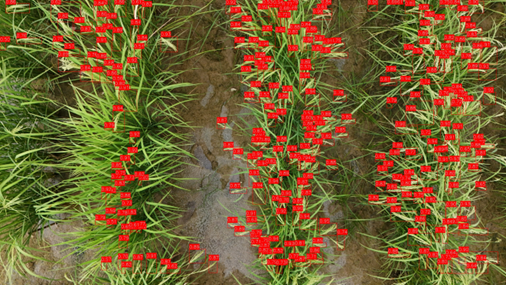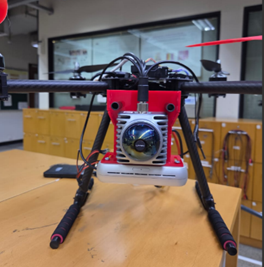WIT Develops Low-Cost Drone Solutions for Precision Agriculture in Pakistan
Drones are taking precision agriculture to the next level. By enabling highly targeted spraying, reducing chemical overuse, and providing real-time information about crops, they help farmers boost productivity while minimizing environmental impact.
Yet despite the global rise of these technologies, Pakistan’s agricultural sector has struggled to benefit from them. Most farmers still rely on traditional practices such as flood irrigation and heavy fertilizer and pesticide use—methods guided by routine rather than data. These approaches miss out on the wealth of information now available from satellite imagery, drone-based monitoring, and IoT sensors, leading to inefficient water use and limited visibility into crop health. Smallholder farmers also face significant barriers, including limited technical training, weak digital infrastructure, and difficulty interpreting complex digital data, all of which make modern tools difficult to adopt. This creates a clear need for technologies that are affordable, easy to use, and tailored to Pakistan’s local farming conditions.

Addressing these challenges is a major research thrust at the Centre for Water Informatics and Technology (WIT) at LUMS. Our work focuses on developing practical, locally relevant technologies that enable information-driven decision making in agriculture. By combining expertise in drones, automation, and environmental sensing, WIT is creating precision-agriculture solutions that are accessible to farmers with limited technical know-how. Under the leadership of Dr. Hassan Jaleel, the Centre is advancing drone-based imaging and AI-powered analytics for crop-health assessment, yield prediction, and plant phenotyping, placing WIT at the forefront of efforts to bring modern, data-driven agriculture to Pakistan.
A key focus of this work is the development of low-cost, easy-to-use drone systems that small and medium-scale farmers in Pakistan can adopt without specialized training. Instead of relying on large industrial drones, which are expensive, require certified operators, and often face strict regulatory restrictions, WIT uses compact consumer-grade drones such as the DJI Mini 4 Pro. These drones are affordable, widely available in local markets, and simple enough for non-professionals to operate. Despite their size, they capture high-resolution aerial images that carry valuable information about crop conditions.

| 
|
To turn these images into useful insights, WIT has developed its own computer vision and photogrammetry pipelines. These advanced processing tools convert raw aerial photographs into detailed three-dimensional maps of crop fields. These 3D reconstructions help identify problem areas, detect early signs of crop stress, and monitor growth patterns with far greater accuracy than traditional field visits. Building on this foundation, WIT is developing AI models that can automatically count plants, detect panicles in rice or wheat heads in wheat fields, and compute multiple vegetation indices to estimate yields and assess crop health. Together, these innovations demonstrate how low-cost drone systems can now provide high-value analytics that were once possible only with expensive, specialized equipment.
Alongside consumer drones, WIT is also designing custom-built drone platforms equipped with LiDAR and integrated cameras. These advanced systems combine multiple sensors to create highly precise, high-resolution 3D maps—an essential capability in fields with dense crops or uneven terrain. By creating both off-the-shelf and custom solutions, WIT is ensuring that precision agriculture tools remain adaptable to the diverse needs of Pakistani farmers.

|
This initiative was developed by a dedicated team of Research Assistants at WIT and students from the Electrical Engineering and Computer Science departments. The team, Ibrahim Rana, Muhammad Ahson Hassan, Hussain Habib, Musab Chaudhary, Sheza Abbas Naqvi, Shayan, and Maheen, contributed to drone development, imaging workflows, and the AI analytics that power this work.
Through these efforts, WIT continues to push the boundaries of what is possible in Pakistan’s agricultural sector, making advanced, data-driven farming tools accessible to those who need them most and paving the way for a more sustainable, productive, and technologically empowered future.






